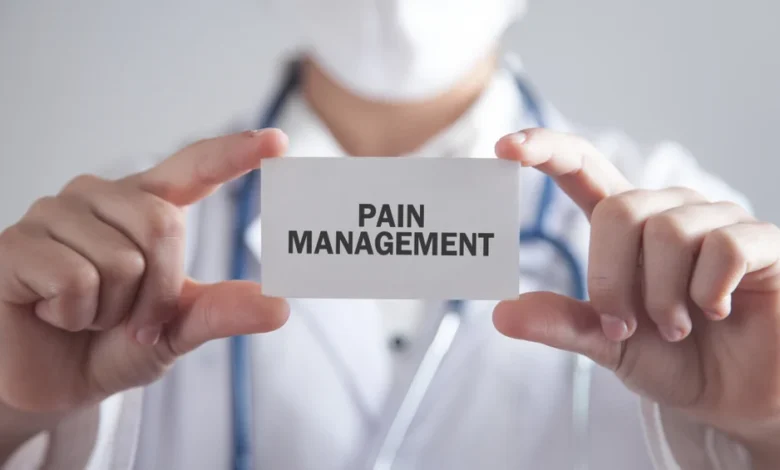Comprehensive Care at Pain Treatment Clinics: What to Expect

If you’re living with chronic pain, you already know how it can affect every aspect of your life—your mood, your energy, and your ability to enjoy daily activities. Whether it’s back pain, arthritis, nerve issues, or any other type of discomfort, pain can be overwhelming. Fortunately, pain treatment clinic offer specialized care designed to help you manage and alleviate your pain, improve your functionality, and restore your quality of life.
In this article, we’ll walk you through what you can expect from a pain treatment clinic, the types of treatments offered, and why these clinics are essential for those suffering from chronic pain.
What is a Pain Treatment Clinic?
A pain treatment clinic is a specialized medical facility that focuses on diagnosing, treating, and managing both acute and chronic pain. These clinics use a variety of approaches, including medications, physical therapies, injections, and cutting-edge procedures to help patients experience significant relief from their symptoms.
Pain treatment clinics are staffed by a team of healthcare professionals with expertise in various aspects of pain management. This often includes:
- Pain specialists
- Physicians (such as anesthesiologists or neurologists)
- Physical therapists
- Psychologists or counselors
- Nurses and support staff
Types of Pain Treated at Pain Treatment Clinics
Pain treatment clinics provide care for a wide range of pain conditions. Some of the most common types of pain treated include:
- Back pain (including lower back, upper back, and neck pain)
- Arthritis pain (joint pain and inflammation)
- Nerve pain (sciatica, neuropathy)
- Headaches and migraines
- Fibromyalgia
- Cancer-related pain
- Sports injuries
- Post-surgical pain
- Chronic pain conditions such as complex regional pain syndrome (CRPS) or temporomandibular joint disorder (TMJ)
Whether your pain is a result of an injury, a medical condition, or a post-surgery complication, pain treatment clinics provide personalized care that focuses on both relieving symptoms and addressing the underlying causes.
What to Expect During Your First Visit to a Pain Treatment Clinic
Your first visit to a pain treatment clinic will likely involve an initial consultation and evaluation. The goal of this visit is to assess your pain, understand your medical history, and develop a personalized treatment plan. Here’s what you can expect:
1. Comprehensive Medical Evaluation
During your first visit, the healthcare provider will begin by discussing your pain in detail. Expect questions about:
- When and how your pain started
- The intensity and frequency of your pain
- Any factors that make your pain better or worse
- Your medical history, including any previous treatments or surgeries
- Your lifestyle, including exercise, work habits, and stress levels
A thorough evaluation will help the healthcare provider understand the root cause of your pain and guide them in developing a treatment strategy.
2. Physical Examination
A physical exam will typically follow your discussion. The doctor may ask you to perform certain movements or tests to assess your range of motion, muscle strength, and pain sensitivity. If necessary, the clinic may request imaging tests such as X-rays, MRIs, or CT scans to get a clearer picture of what might be causing your pain.
3. Developing a Personalized Treatment Plan
Once the healthcare provider has gathered enough information, they will discuss your treatment options. This plan will be customized to meet your specific needs and could include a combination of therapies. Pain management is rarely a “one-size-fits-all” approach, so your treatment will be tailored to your unique condition, preferences, and goals.
Common Treatments at Pain Treatment Clinics
Pain treatment clinics offer a wide range of therapies designed to manage, reduce, and eliminate pain. Here’s an overview of some of the most common treatments you might encounter:
1. Medications
For many individuals, medications are a key part of pain management. At pain treatment clinics, doctors may prescribe a variety of medications depending on the type and severity of your pain. These may include:
- NSAIDs (Nonsteroidal anti-inflammatory drugs): For mild to moderate pain and inflammation (e.g., ibuprofen or aspirin).
- Opioids: For more severe pain, though they are used cautiously due to the risk of addiction and dependency.
- Muscle relaxants: To alleviate muscle spasms.
- Antidepressants or anticonvulsants: These medications are sometimes used to treat nerve pain.
The healthcare team will work with you to ensure you’re on the right medication, while also considering potential side effects and long-term effects.
2. Physical Therapy
Physical therapy (PT) is a cornerstone of pain management, especially for musculoskeletal pain. Physical therapists teach patients exercises, stretches, and movements that help strengthen muscles, improve flexibility, and increase mobility. PT can also help correct posture and movement patterns that contribute to pain.
3. Injections
Injections can be used to target pain directly at the source. Some common injection treatments include:
- Epidural steroid injections: Often used for back pain or sciatica, these injections deliver steroids to the area around the spinal cord to reduce inflammation and pain.
- Facet joint injections: For spinal pain originating from the facet joints in the spine.
- Nerve blocks: These injections target specific nerves responsible for transmitting pain signals, providing relief for certain types of pain.
- Botox injections: In some cases, Botox injections are used to relieve chronic migraines and muscle-related pain.
These injections can provide both short-term and long-term relief, depending on the condition being treated.
4. Regenerative Medicine
Regenerative medicine, such as platelet-rich plasma (PRP) therapy and stem cell therapy, promotes healing in damaged tissues by stimulating the body’s natural repair mechanisms. This type of treatment is often used for joint pain, tendon injuries, and arthritis. These therapies offer a promising non-surgical alternative for patients seeking long-lasting pain relief.
5. Acupuncture and Alternative Therapies
Some pain treatment clinics offer complementary therapies such as acupuncture, chiropractic care, or massage therapy. Acupuncture involves inserting thin needles into specific points on the body to stimulate energy flow, which can help reduce pain and inflammation. Chiropractic care can also help with musculoskeletal pain by adjusting the spine and joints.
6. Psychological Support
Living with chronic pain can take a mental and emotional toll. Pain treatment clinics recognize the importance of addressing these aspects of pain and may offer counseling services, including cognitive-behavioral therapy (CBT). CBT helps patients identify and change negative thought patterns that may exacerbate pain, while also teaching coping strategies for managing stress and emotional distress related to pain.
Why Choose a Pain Treatment Clinic?
Pain treatment clinics offer comprehensive, personalized care that goes beyond traditional doctor’s office visits. These clinics provide access to a team of specialists who work together to create a holistic plan tailored to your needs. Instead of just masking your pain, pain treatment clinics focus on identifying the root cause of your discomfort and providing long-term solutions.
The multidisciplinary approach of pain treatment clinics ensures that you receive a combination of treatments that work together to provide relief, improve mobility, and enhance your overall well-being. The clinic’s focus is on helping you regain control of your life and reduce reliance on pain medications.
Conclusion
If you’re struggling with chronic pain, a pain treatment clinic offers a comprehensive, team-based approach to managing your discomfort. With a range of treatment options—from physical therapy to advanced procedures like injections and regenerative medicine—a pain treatment clinic can help you find lasting relief and improve your quality of life. By working closely with healthcare providers, you can develop a personalized plan that addresses your unique needs, ultimately helping you manage your pain more effectively. Don’t let pain control your life—take the first step toward recovery by seeking comprehensive care at a pain treatment clinic today.


